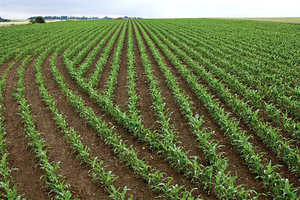The results from the “2015 Indiana Fall Tillage and Cover Crop Transect” show that soil health in the state is improving. The data found that more than 1.1 million acres of cover crops were planted last year, which is an increase of 10 percent from 2014. Additionally, this is 225 times more coverage than what has been recorded over the past decade.
“We introduced the cover crop assessment to the survey in 2011 so that we could better tell the story of Indiana’s conservation efforts,” said Jane Hardisty, Natural Resources Conservation Service state conservationist. “Cover crops protect soil from extreme weather and retain valuable nutrients in fields during winter months, playing a key role in soil health. With more farmers implementing this practice, the 2015 survey results prove why Indiana continues to be a national leader in soil health.”
Cover crops are designed to build soil organic matter, protect against soil erosion and reduce compaction. Additionally, they make soil more resilient to weather extremes while cycling nutrients. According to data from the survey, Indiana farmers continued plowing less and using conservation practices that preserve topsoil in 2015.
“When our farmers apply sound conservation practices, it’s good for the soil, contributes to improved water quality and good for the future of agriculture,” said Ted McKinney, Director of the Indiana State Department of Agriculture.
More information on the survey, tillage, and conservation practices can be found on icp.iaswcd.org.
